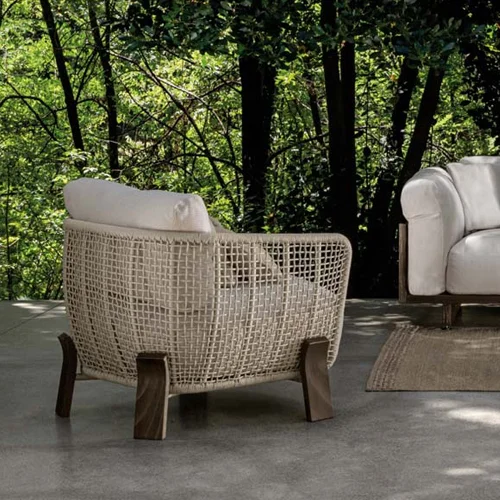Can You Leave Cushions on Outdoor Furniture If Covered
Potential Issues
Leaving cushions on outdoor furniture, even if covered, can lead to a number of potential issues. While it may seem like a convenient solution cushions in place and protected from the elements, there are certain drawbacks to consider.
One of the main concerns with leaving cushions on outdoor furniture is the risk of moisture build-up. Even if the furniture is covered, moisture can still seep through the cover and accumulate on the cushions. This can lead to mold and mildew growth, which not only damages the cushions but also poses health risks to those using them.
In addition, leaving cushions on outdoor furniture can also attract pests such as insects and rodents. These pests may be drawn to the soft and cozy material of the cushions, and can cause damage by chewing or nesting in them.
Another issue to consider is the potential for sun damage. Even if covered, prolonged exposure to sunlight can cause the fabric of the cushions to fade and deteriorate over time. This can result in a shorter lifespan for the cushions, requiring more frequent replacements.
Furthermore, leaving cushions on outdoor furniture can make them more susceptible to wear and tear. Constant pressure and weight on the cushions can cause them to lose their shape and support, resulting in a less comfortable seating experience.
In conclusion, while leaving cushions on outdoor furniture may seem convenient, it is important to consider the potential issues that can arise. To ensure the longevity and comfort of your outdoor furniture, it is best to remove the cushions and store them in a dry and protected area when not in use.
Benefits of Leaving Cushions on Outdoor Furniture
Leaving cushions on outdoor furniture, even if covered, can provide numerous benefits. First and foremost, having cushions on your outdoor furniture can greatly enhance the comfort level for anyone using the furniture. Whether you are enjoying a meal on your patio or lounging in the sun, having cushions can make the experience much more enjoyable.
Furthermore, cushions can also help to protect your outdoor furniture from damage. By providing a barrier between the furniture and any potential scratches or spills, cushions can help to prolong the life of your outdoor furniture. This can be particularly important if you have invested in high-quality outdoor furniture that you want to keep looking its best for as long as possible.
In addition to comfort and protection, leaving cushions on outdoor furniture can also add an element of style to your outdoor space. With so many different colors, patterns, and styles to choose from, cushions can be a great way to add a pop of color or a touch of personality to your outdoor furniture.
Lastly, leaving cushions on outdoor furniture can also save you time and effort. Instead of having to constantly put cushions on and take them off every time you want to use your outdoor furniture, leaving them on can make it much more convenient to simply step outside and start enjoying your outdoor space.
Overall, leaving cushions on outdoor furniture, even if covered, can provide numerous benefits such as increased comfort, protection for your furniture, added style, and convenience. So if you have cushions for your outdoor furniture, consider leaving them on to enjoy these benefits.
Tips for Protecting Cushions
When it comes to protecting cushions on outdoor furniture, one of the best tips is to invest in high-quality covers specifically designed for outdoor use. These covers can help shield the cushions from the elements, such as rain, snow, and harsh UV rays.
Additionally, it’s important to choose cushions that are made of durable and weather-resistant materials. Opt for cushions that are water-resistant, fade-resistant, and mold-resistant to ensure they stand up to outdoor conditions.
If you do decide to leave cushions on outdoor furniture when covered, make sure the covers are securely fastened and provide proper ventilation to prevent moisture buildup. It’s also a good idea to periodically remove the covers and allow the cushions to air out to prevent mold and mildew growth.
Regular cleaning and maintenance are also essential for protecting outdoor cushions. Wipe down cushions regularly to remove dirt and debris, and spot clean any stains as soon as they occur. Proper care can help extend the lifespan of your cushions and keep them looking their best.
Lastly, consider storing cushions indoors during the off-season or during periods of prolonged inclement weather. This can help protect the cushions from excessive wear and tear, ensuring they remain in top condition for years to come.
Recommended Materials for Outdoor Cushions
When it comes to outdoor cushions, selecting the right materials is crucial for both durability and comfort. It is recommended to choose cushions made that are water-resistant and mildew-resistant. Sunbrella fabric is a popular choice for outdoor cushions as it is known for its fade-resistant and easy-to-clean properties. This fabric is designed to withstand the elements, making it ideal for outdoor use.
In addition to the fabric, the filling of the cushions is also important. Opt for cushions with quick-drying foam or polyester fill to prevent mold and mildew from forming. These materials are designed to repel moisture, making them suitable for outdoor use.
While it is possible to leave cushions on outdoor furniture if they are covered, it is still recommended to bring them indoors or store them in a dry place when not in use. This will help extend the life of the cushions and prevent them from getting damaged by extreme weather conditions.
In conclusion, when choosing materials for outdoor cushions, prioritize water-resistant and mildew-resistant fabrics, as well as quick-drying fillings. By taking care of your outdoor cushions and storing them properly, you can enjoy your outdoor furniture for years to come.

